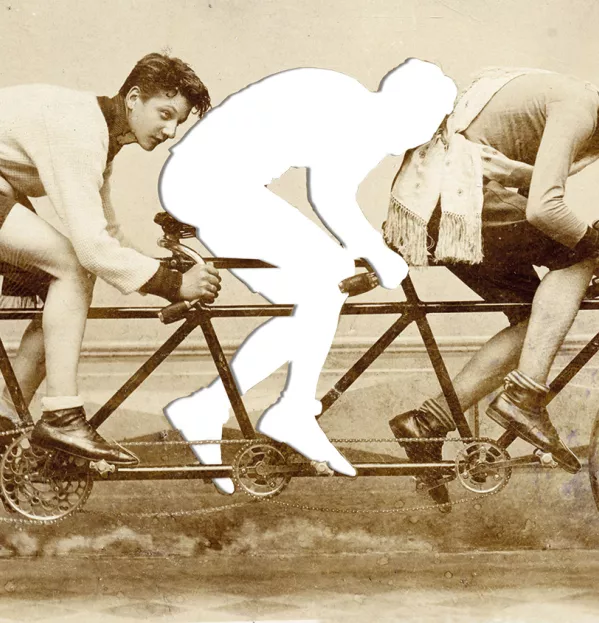How to effect change from the middle

Sending what you thought was an innocuous email to the headteacher suggesting a positive improvement to a school system seemed like a good idea at the time. But instead of the high praise you expected, your idea seems to have ruffled a few feathers.
If you are someone who is keen to share ideas and improve your school, you need to be aware that when you put your head above the parapet, the risk of being shot down is equal to that of being celebrated.
But that doesn’t mean you shouldn’t try. Here are some tips from a battle-hardened middle leader on how to emerge at least occasionally victorious from the pedagogical fray.
Know your school culture
Understanding the culture you work in is vital to successfully driving change from a middle leadership position. Is there a strictly hierarchical structure, in which everything must go through line managers? Or do you have a more open workplace, where status is less important than exploration of ideas? Recognising this, along with being clued up about current whole-school development plans, will help you to express ideas in a way that will encourage a favourable reception.
If you have a proposal, first take time to ask yourself if it is in line with current school priorities. If not, how can you align it with core school values and aims? Relevance and timing are crucial. Even if you work in a school that is open to new ideas, is now the most appropriate time to share? Is it an idea that’s been previously raised and rejected?
Do your research, and bear in mind the workload and priorities of the senior leadership team (SLT). They are busy people, so schedule your proposals accordingly.
Your SLT consists of individuals
Leadership roles are about influential, as much as instrumental, power. As a middle leader, you’ll need to influence in all directions, but getting a specific idea implemented requires you to approach and influence the right people. This means knowing the specific areas for which each member of the SLT is professionally responsible.
It is also worth taking the time to get to know your SLT as individuals. The stern behaviour guru may have a surprising penchant for musicals; the data diva might take your inability to use spreadsheets in her stride because she has three children under the age of four. The person responsible for CPD may not be up to date with current research, but is he threatened by your ideas or enthusiastic and open to learn?
There will be different personality types and leadership styles across the team. Some will be open, others closed; some confident, others fearful; some thinkers, others doers.
Approaching the right person may therefore not always involve talking to the manager with the relevant job title, but seeking out someone with the appropriate personality or shared interests.
Keep integrity high, ego low
However, approaching the right person will make no difference at all, if what you are suggesting won’t genuinely benefit the school community. Think about the impact of your proposal from all angles before putting it forward; be sure its integrity is intact and you have thought through any repercussions, for example, on staff workload, student wellbeing or curriculum breadth. Do your homework. Is there research available to back it up?
Remember that the integrity of your idea will stem, in part, from your own reputation. Schools are small communities.
Every conversation you have and action you take is building that reputation, day in, day out.
If you are known as someone who helps students make progress, supports their team, shares resources, works well with parents, ensures credit is given where it’s due, doesn’t shy away from difficult conversations and takes responsibility for mistakes as well as successes, senior leaders are more likely to listen to your suggestions.
Above all, don’t put forward an idea purely to climb the greasy pole. Approaching the SLT with a suggestion shouldn’t be about “raising your profile”; such shallow, ingratiating behaviour can be spotted a mile off by stressed teachers who have no time to be a pawn in your career-building game.
Don’t be so focused on fawning over your bosses that you take for granted the team hard at work around you.
Ultimately, if you know your proposal has integrity, you have done your research and you believe it is achievable within the context of your school, keep the faith and be patient.
One idea I put forward took three years to be accepted. Most change in schools is incremental rather than radical.
Stephanie Keenan is curriculum leader for English and literacy at Ruislip High School in London
You need a Tes subscription to read this article
Subscribe now to read this article and get other subscriber-only content:
- Unlimited access to all Tes magazine content
- Exclusive subscriber-only stories
- Award-winning email newsletters
Already a subscriber? Log in
You need a subscription to read this article
Subscribe now to read this article and get other subscriber-only content, including:
- Unlimited access to all Tes magazine content
- Exclusive subscriber-only stories
- Award-winning email newsletters